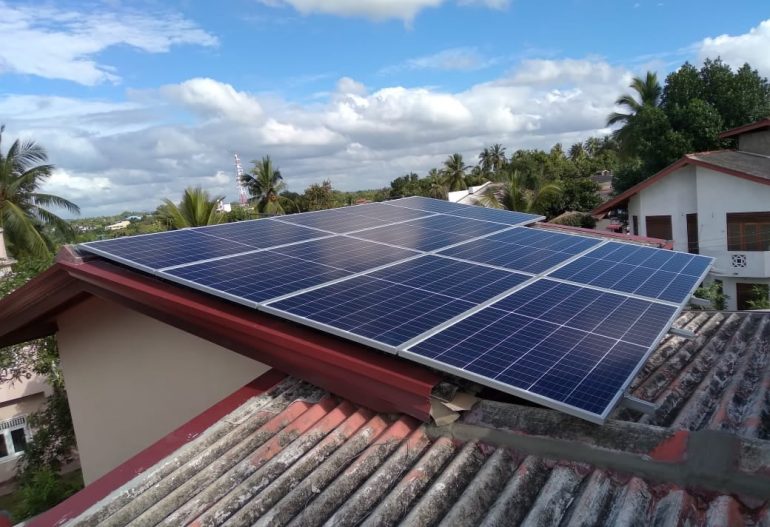On-grid means your solar system is tied to your local utility’s GRID. This is what most residential homes will use because you are covered if your solar system under or over-produces in regard to your varying energy needs. All this means for you is that your utility system acts as your battery space. If you are producing more energy with your solar panels or system than you are using, the excess energy is sent to your grid’s power company, allowing you to build credit that you can cash out with at the end of the year, in a process called net metering.
Being grid-tied is beneficial because you don’t have to buy an expensive battery backup system to store any excess energy. Being off-grid means you are not connected in any way to your grid’s power system or utility company. This is appealing because you are 100% self-sustaining in your energy use. However, there are disadvantages because off-grid systems require you to purchase a backup battery which can be expensive, bulky, and not very environmentally friendly which defeats the purpose of going solar (save money and live greener).
Net Metering
Provision of net metering arrangement to the consumer, who intends to install a grid-connected rooftop solar system, in its area of supply on a non-discriminatory and first come first serve basis as specified under Arunachal Pradesh State Electricity Regulatory Commission (Rooftop Solar Grid Interactive systems based on Net metering)
Maximum cumulative capacity allowed to eligible consumers under net metering, on yearly basis, in the area of supply of the distribution licensee as per the following target. The cumulative capacity to be allowed at a particular distribution transformer shall not exceed 15% of the peak capacity of the distribution transformer.
All eligible consumers of electricity in the area of supply of the distribution licensee can participate in the solar rooftop ne metering arrangement. Maximum rooftop solar system capacity to be installed at any eligible consumer shall be between 1KWp to 1000 KWp (1MWp). A variation in the rated capacity of the system within a range of 5% is allowed; The installed capacity is aligned with the provisions of the Arunachal Pradesh Electricity Supply Code- 2013 for permitting consumer connections
Interconnection with the Grid Specifications, Standards, and Safety Requirements
- Specification and standards as provided in the Central Electricity Authority (Technical Standards for connectivity of the Distributed Generation Resources) Regulations, 2013, and as amended from time to time.
- Relevant provisions of the Central Electricity Authority (Measures relating to Safety and Electric Supply), Regulations, 2010, as amended from time to time.
- Standards, specifications, and accuracy class as provided in the Central Electricity Authority (Installation and Operation of Meters) Regulations, 2006, as amended from time to time.





